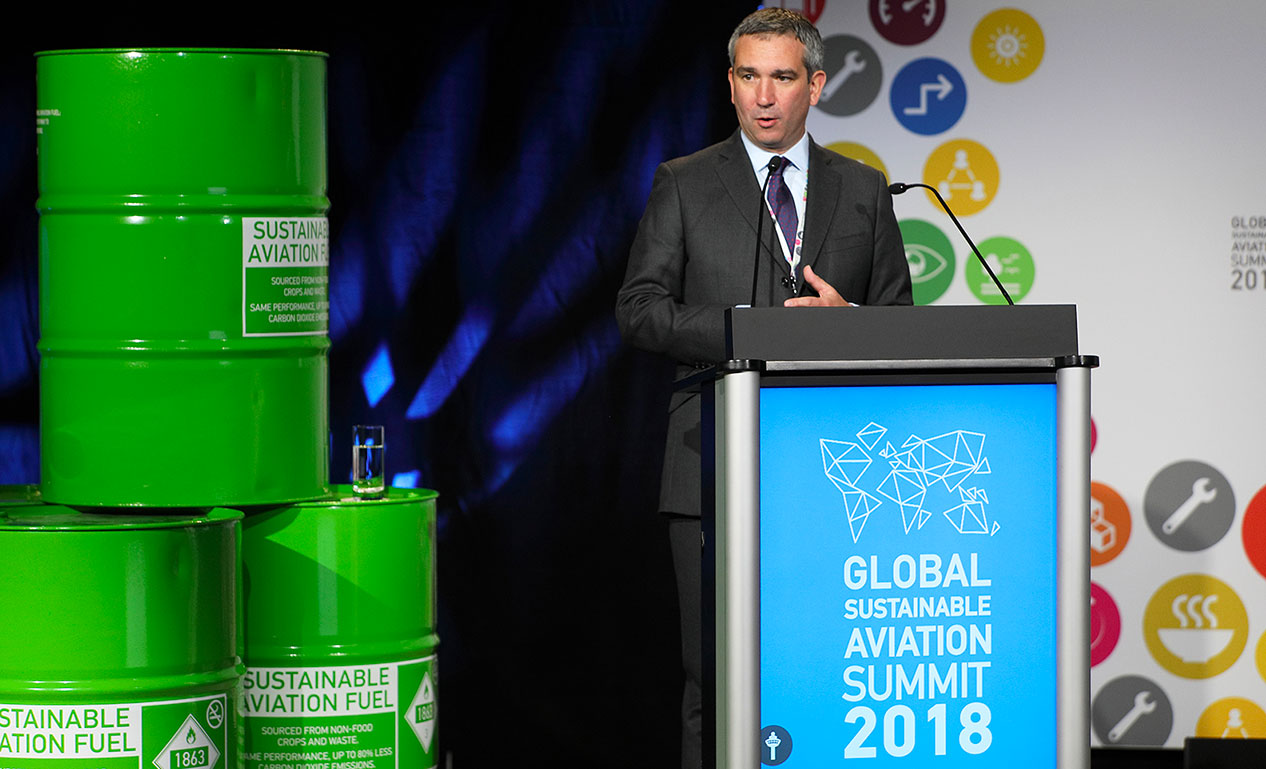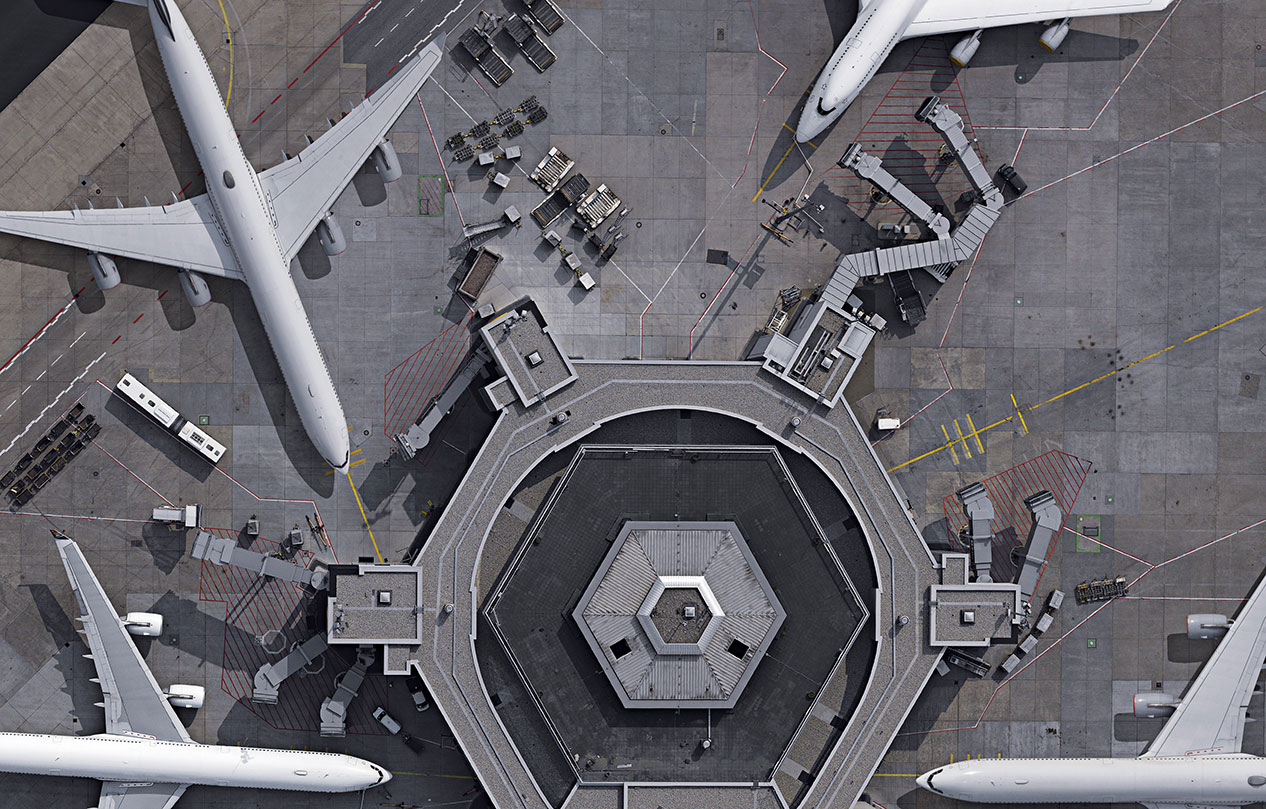Culture
Innovate for climate
A special interview with Michael Gill, Executive Director of the Air Transport Action Group, the worldwide association that strives for a sustainable future for aviation.
Apr 2019
Humans’ environmental impact is one of the most debated issues of the century we’re living in. The growing global level of polluting emissions, the increasing reduction of the ozone layer and the consequent increase in temperatures are among the most scaring threats to humankind. By 2040, emissions of CO2 and NOX are predicted to increase by at least 21% and 16%, respectively.
The air transport sector is responsible for 12% of all transport sources’ CO2 emissions and accounts for around 2% of all human-generated CO2 emissions. Between 2014 and 2017, the number of flights increased by 8% and, in the most-likely forecast, it will grow by 42% from 2017 to 2040.
But back in 2008, industry leaders developed a climate action plan based on three global goals, which the entire sector has committed to. To meet these goals, the industry has put in place a collective strategy that takes account of all means of reducing emissions. The industry has been implementing many of these measures for years. In fact, a flight taken today will produce around half of the CO2 produced by the same flight in 1990.
The Air Transport Action Group (ATAG) is the only non-profit global association that represents all sectors of the air transport industry. Founded in 1990 and based in Geneva (Switzerland), its mission is to promote aviation’s sustainable growth for the benefit of global society and, in order to do this, it brings all aviation industry players together so that they can speak with one voice.
ATAG advocates for coordinated action on strategic issues that require cross-industry involvement and contributes to public policy debates, it mobilises aviation industry towards a joint vision and carries out appropriate studies to develop consistent data, forecasts and information (freely accessible), as briefly explained by its Executive Director, Michael Gill. ATAG also organises global events like the annual Global Sustainable Aviation Summit to unite the industry behind a common objective to tackle the industry's climate change impact.
Appointed as the Executive Director in 2013, Gill is a British native with a notable career path spanning across different European countries. He worked as an aviation lawyer in private practice, then as Senior Legal Counsel at the International Air Transport Association (IATA) where he supported external affairs portfolio collaborating also with the United Nations specialized agency ICAO (International Civil Aviation Organization).
“The ICAO global standard setting is crucial for a truly global industry like aviation” says Gill. “Thanks to the agreements made in ICAO, an aircraft can flying through the airspace of several countries with certainty that it can cope with navigation and communication systems, pick up fuel along the way and that pilots are familiar with the signages and practices anywhere they land.”
GE Aviation – Avio Aero’s parent company – is member of ATAG, which other companies are members of the association and what does it mean to them?
“ATAG has members worldwide: airports, airlines, manufacturers of airframes, engine and aircraft components, air navigation service providers, chambers of commerce, tourism and trade partners and ground transportation. Our membership provides the opportunity to be part of a unique group where leading global aviation organisations and companies work together to enhance the sustainable future of air transport.”
“To achieve the UN Sustainable Development Goals, aviation sector will need to continue to commit in technological innovation, sustainable aviation fuels and new disruptive designs.”
Looking towards the next 10 years, what are ATAG’s main goals and steps to achieve them and how will these goals tackle key sustainable challenges in the aviation industry?
“In the coming years, the industry will continue to improve fuel efficiency to achieve its first climate goal: a 1.5% annual fuel efficiency improvement by 2020. This goal is already being surpassed with an average improvement of 2.3% per year. Fuel efficiency will continuously be improved with a set of measures that include new technology developments, improved operations and infrastructure. And in the medium-term, the industry will continue to work towards achieving its second climate goal: carbon-neutral growth from 2020 onwards. To do so, the aviation industry has called on ICAO to put in place a global market-based measure: the world’s first global carbon mechanism for any industrial sector. As of 2020, airlines worldwide will offset their CO2 emissions under the offsetting scheme known as the Carbon Offsetting and Reduction Scheme for International Aviation (CORSIA). The industry continues to support the implementation of CORSIA, for example through capacity building and advocacy with ICAO.”
The Sustainable Development Goals are at the core of your mission, what are they and what function do they play?
“In 2015, the world’s governments, through the United Nations, agreed on the 2030 Agenda for Sustainable Development. This agenda is framed by 17 overarching Sustainable Development Goals (SDGs), which aim to set priorities and stimulate action in areas of critical importance: people, planet, prosperity and peace. These are not just goals that the United Nations system must target, but a framework for aligned action across all parts of society. The private sector has considerable influence on how many goals can be realised but will also benefit from them. There is an obligation on all companies and industrial sectors to consider not just profit maximisation in business strategy. The global aviation industry is aligned with the 2030 Agenda for Sustainable Development. Analysis shows that the global air transport industry plays a role in supporting 15 out of the 17 SDGs. Through generating connectivity between nations, aviation is a key driver for economic and social development. By partnering with governments and inter-governmental institutions, air transport is working to further its already important role in driving sustainable development.”
While air travel emissions are increasing, the number of airline passengers is expected to double by 2037, and some experts think that we are all going to have to reduce the extent to which we fly: what’s your idea about the future of aviation?
“The industry’s long-term goal is to cut CO2 emissions by 2050 to half of what they were in 2005. This is an ambitious goal in a growing sector, but the industry has recognized its responsibility to reduce its climate impact and is eager to take on this challenge. To achieve this goal, the sector will need to continue to be a world leader in technological innovation. The most significant savings in emissions will be achieved through new sustainable aviation fuels. Some R&D organizations are also exploring new disruptive aircraft designs, which will literally change the shape of aviation.”
What do you think about the development of future air mobility, whether all electric or hybrid, and its digital enablers?
“Electric and hybrid aircraft promise a greener way to travel. It is expected that electric aircraft may be able to replace regional jet-sized short-haul aircraft in the coming decades, but the mid and long-haul aircraft (which make up some 80% of emissions) will still rely on liquid fuels for a long time. Luckily, the industry has been hard at work on an energy transition in these fuels too. Until 2011, there was no certified alternative to traditional fossil fuel for air transport. However, airlines are now able to tap in to new sources of energy: sustainable aviation fuels (SAF). SAF can be up to 80% less carbon intensive compared with fossil-based fuels. More than 40 airlines have gained experience using SAF since 2011. Airlines, airports, producers, suppliers and governments are increasingly seeking to understand their role in advancing the commercialisation of these fuels. Impressive progress has already been made in this fledgling sector, particularly in the last five years, which makes the future seem promising.”
When you travel by plane what do you pay most attention to? Do you have any advice for those who travel a lot?
“Pack light and make sure you offset the carbon emissions from your flight. But, most of all, enjoy the wonder of air travel and our ability to bring people together. We will be able to make connectivity easier and more sustainable if we all work in collaboration, so it’s ‘all hands-on deck’ for a green aviation future!”
“Aviation has one of the clearest and most wide-ranging climate action plans of any global industry”, says Gill. All actors of the aviation industry are committed to this plan and invest in a greener future for flight.
For more information on sustainable aviation, visit www.enviro.aero and www.aviationbenefits.org.









